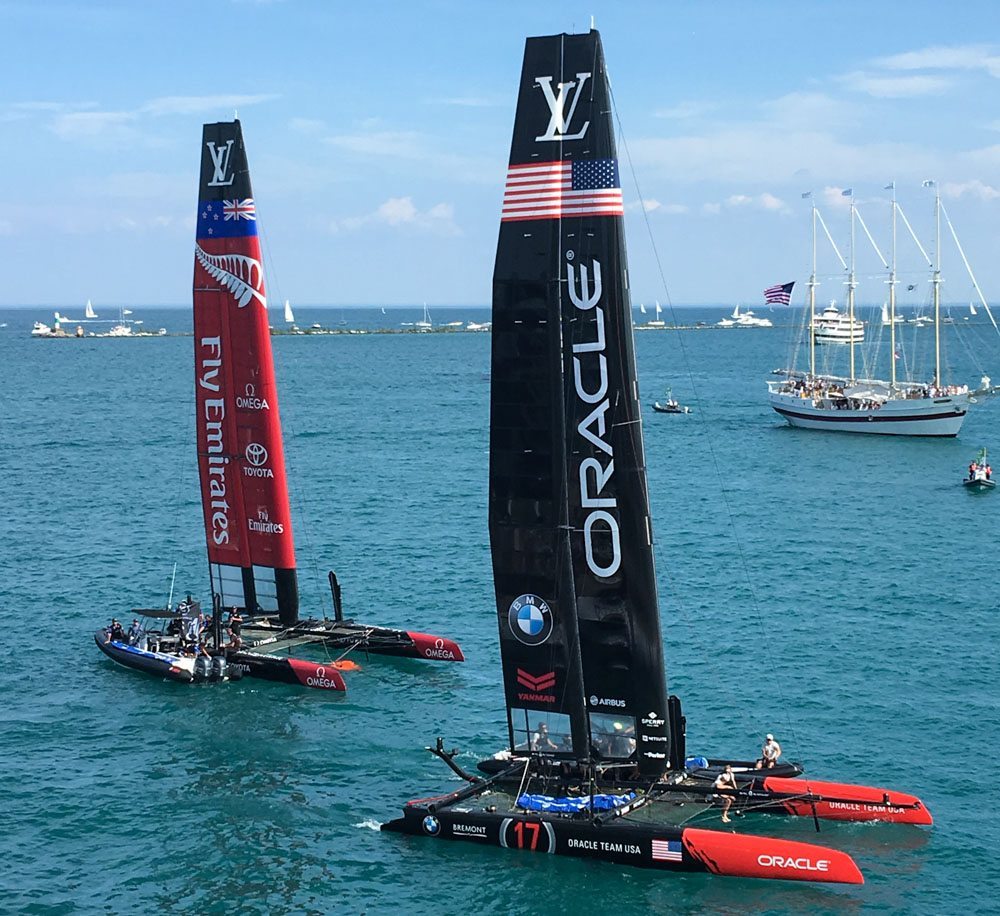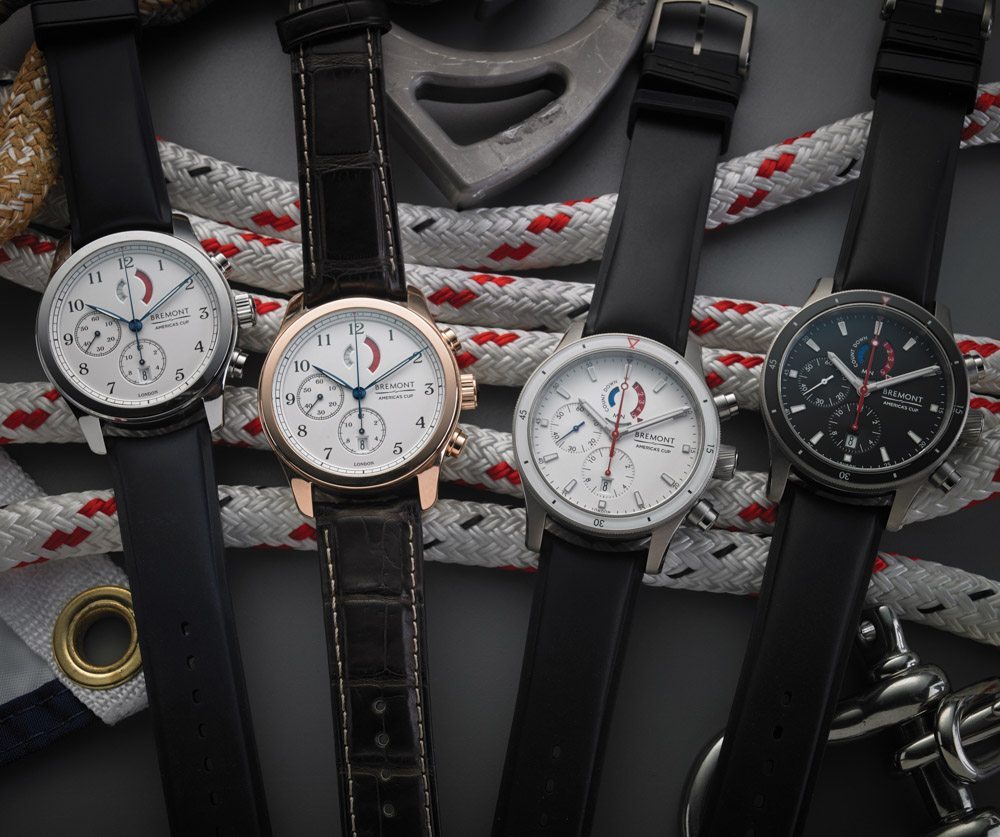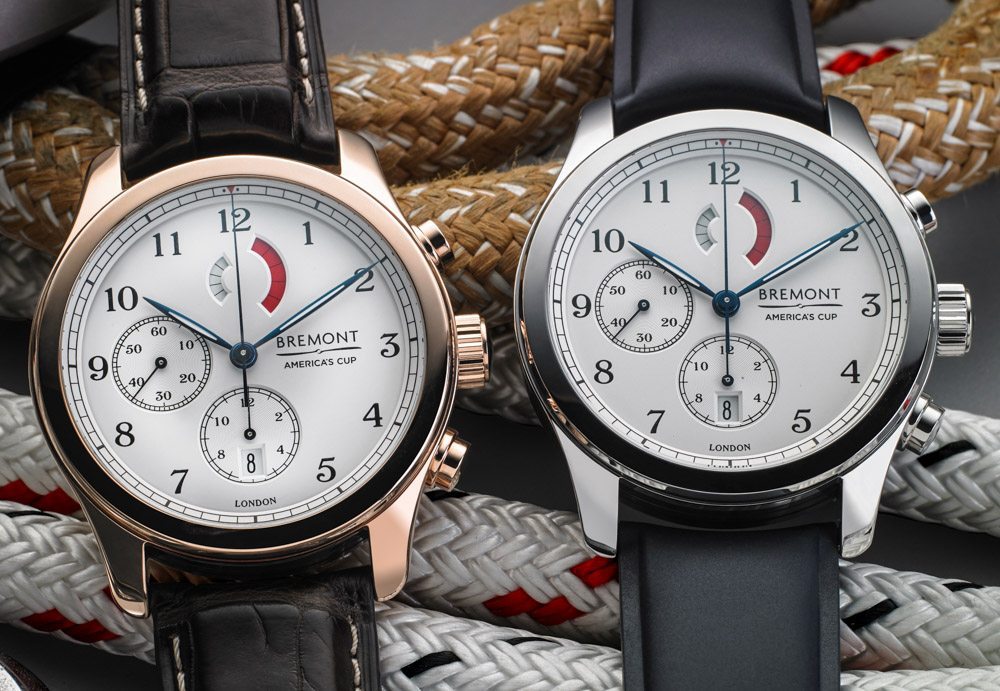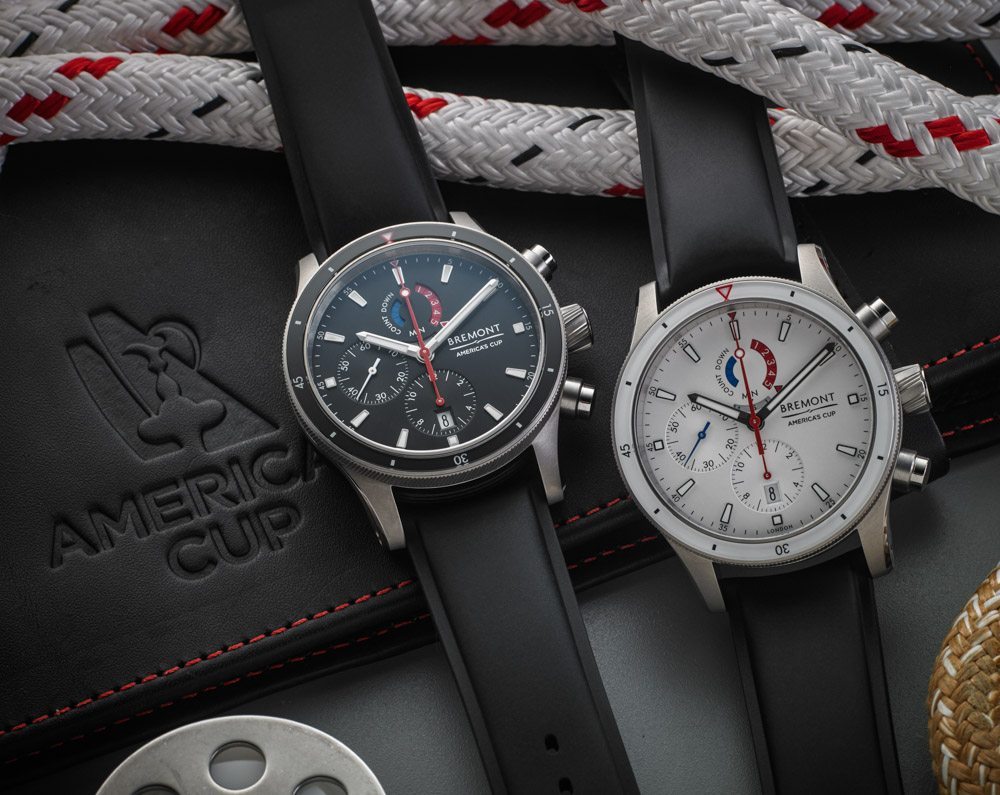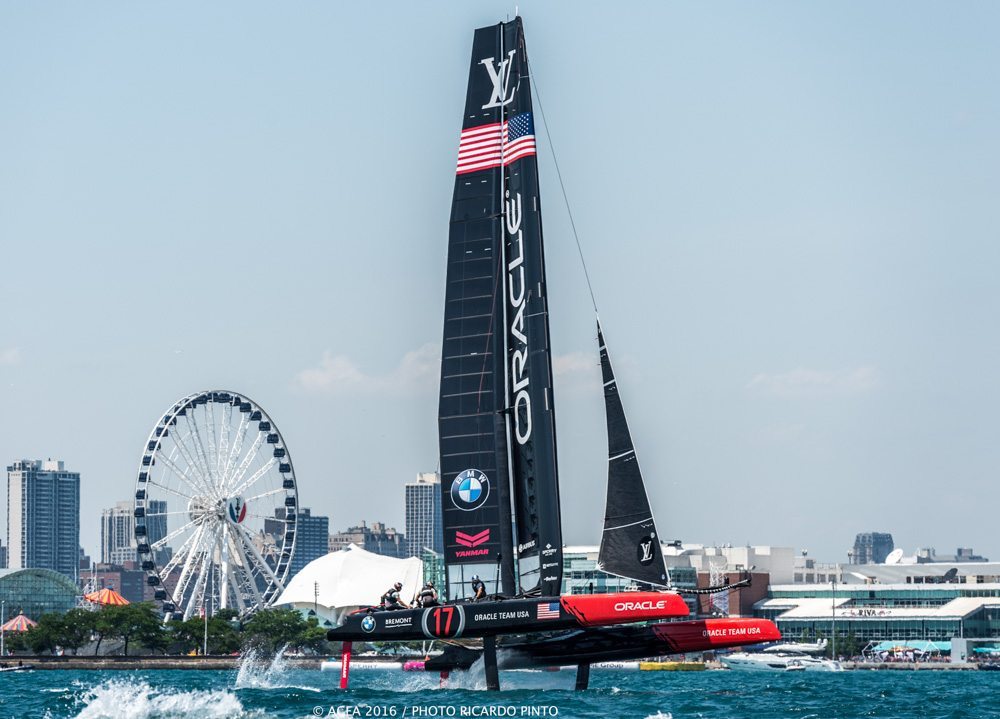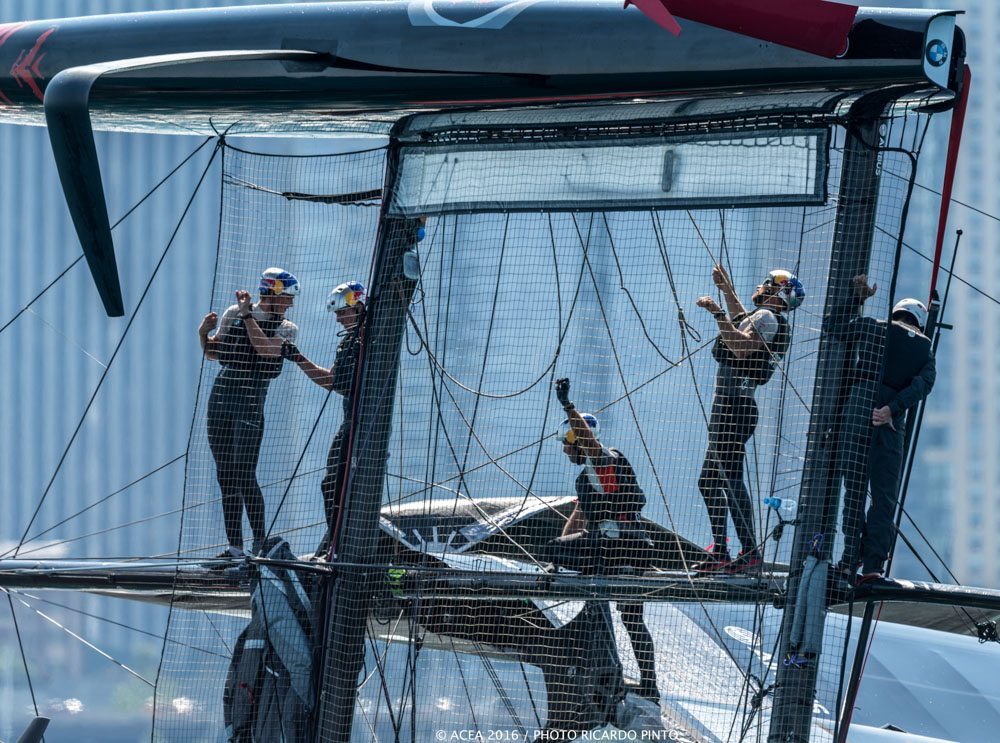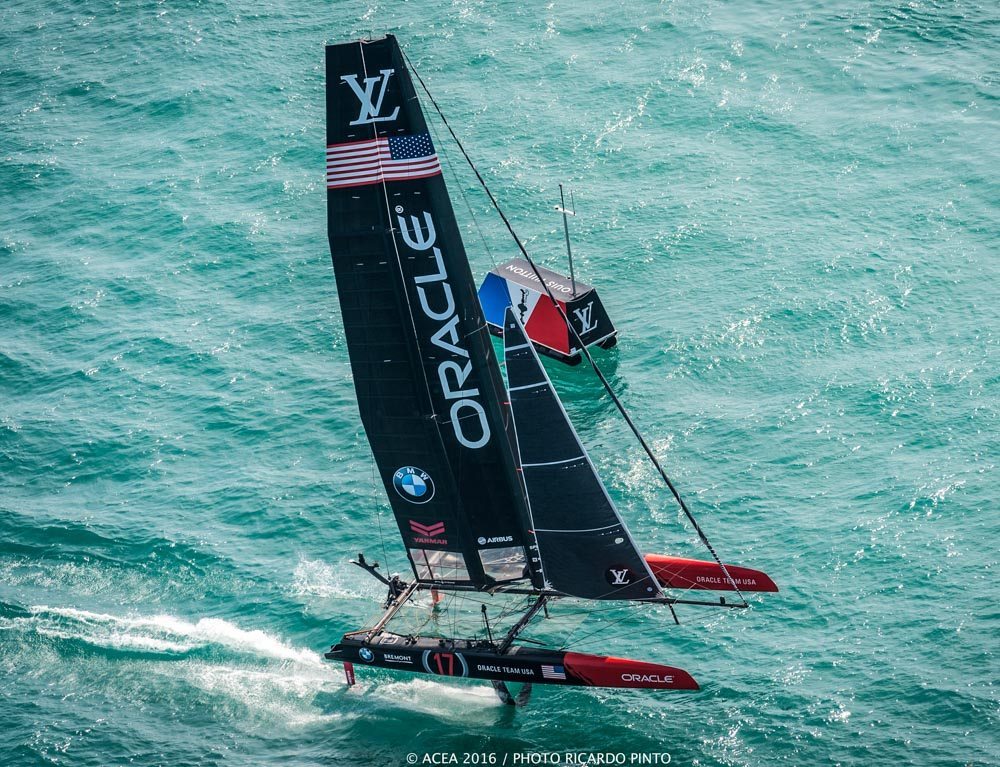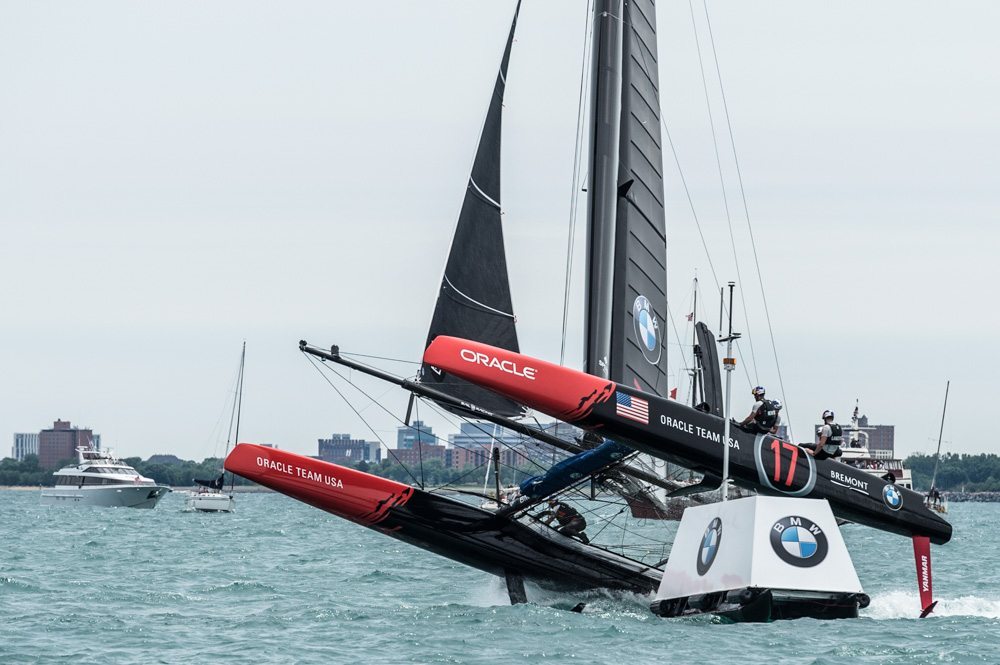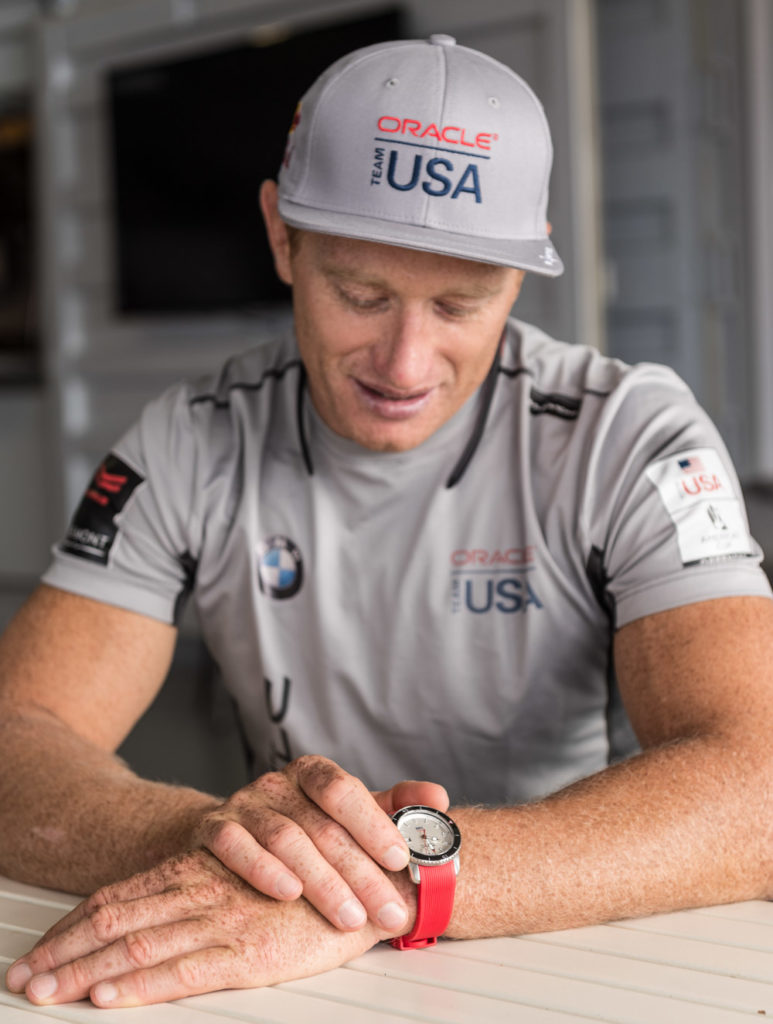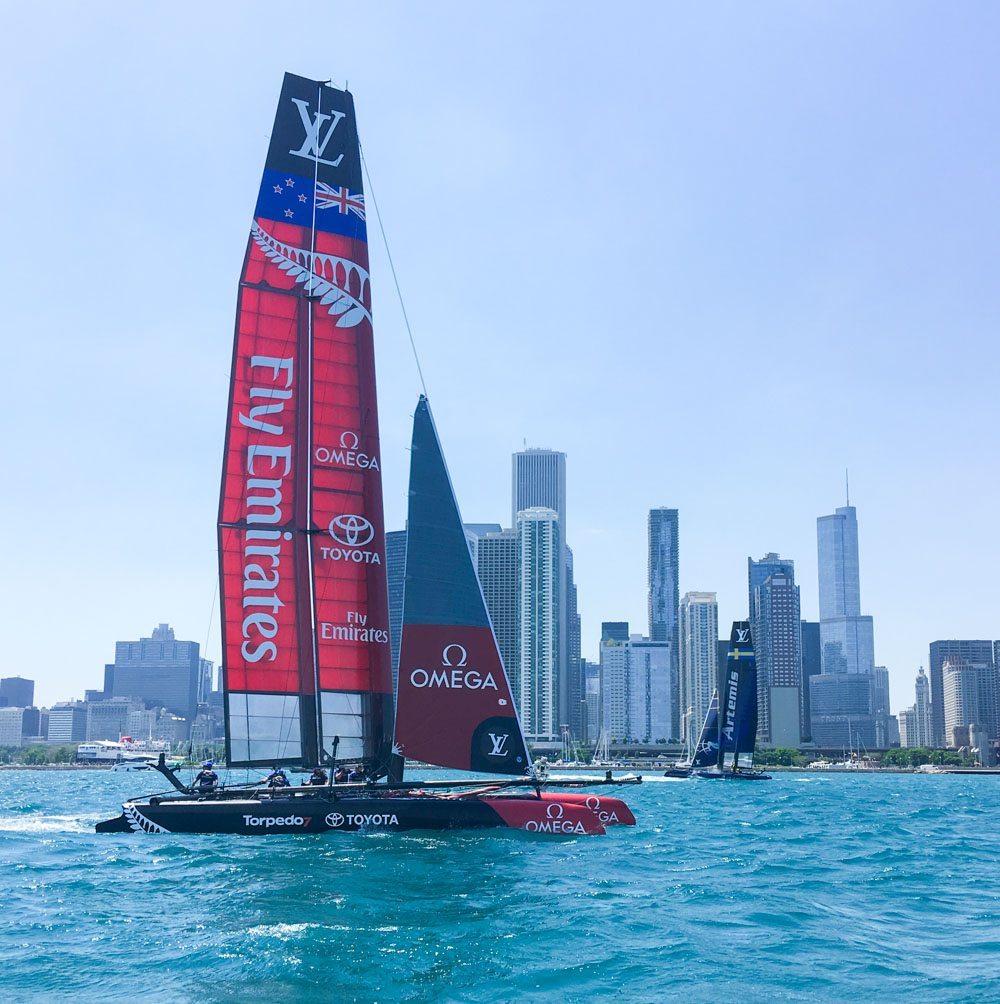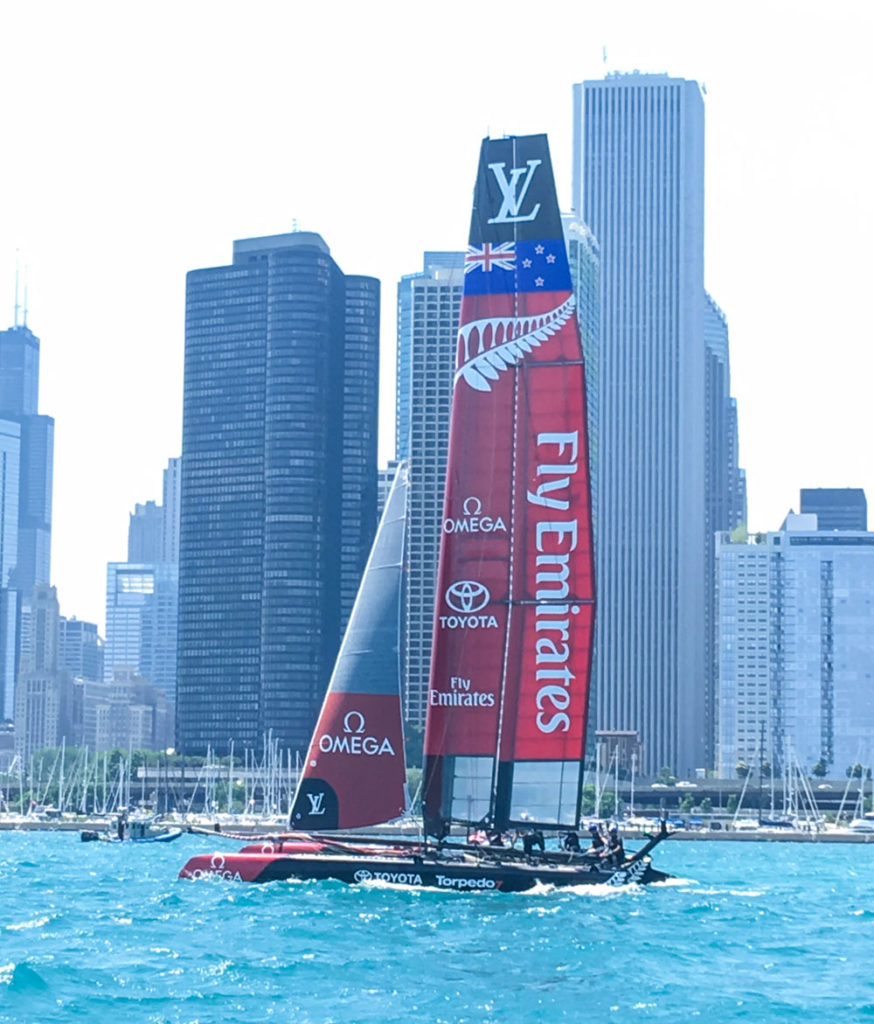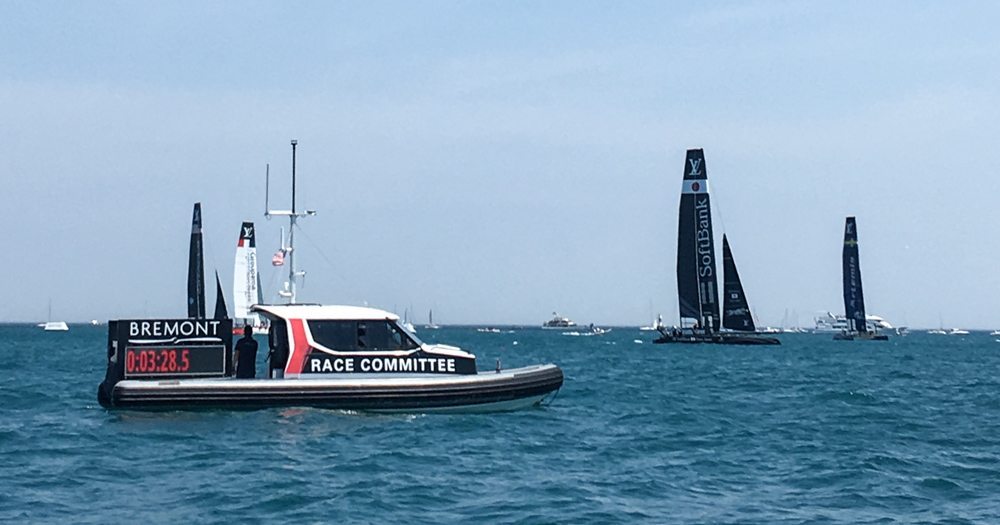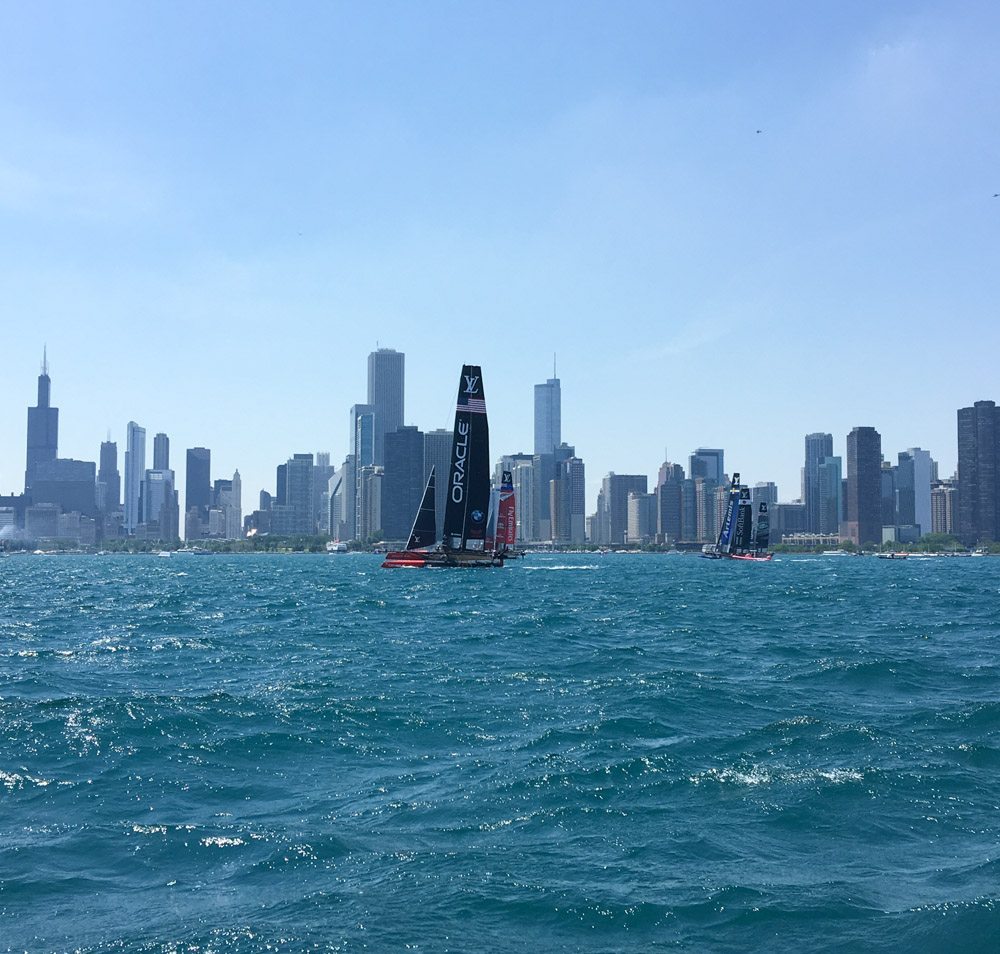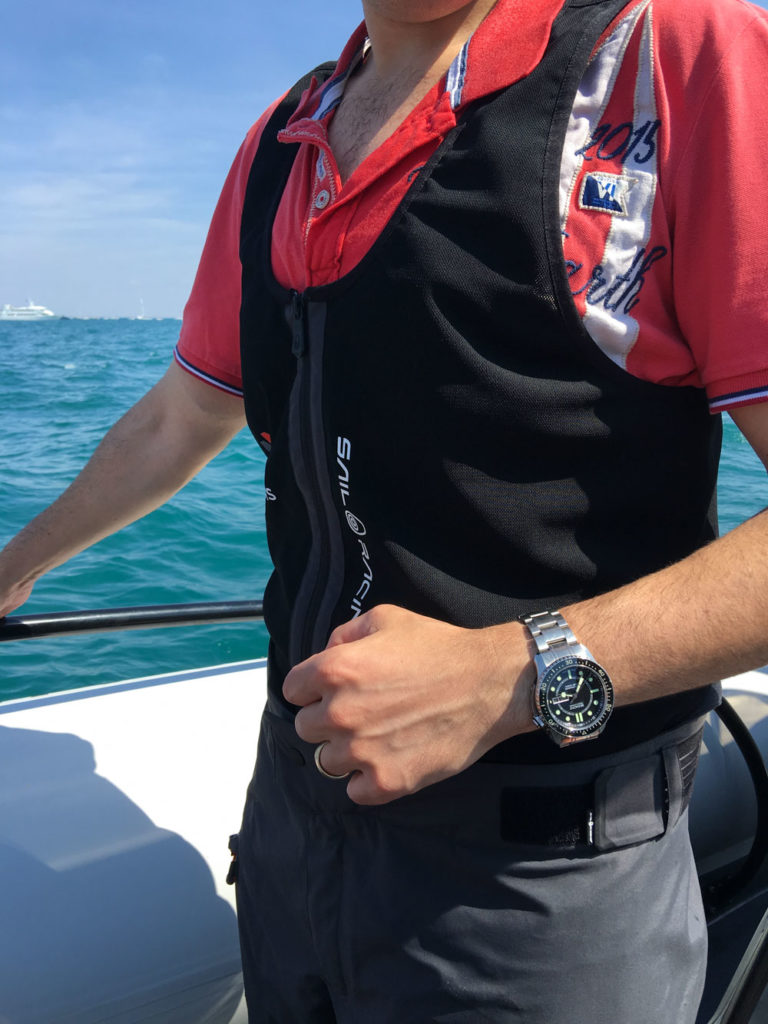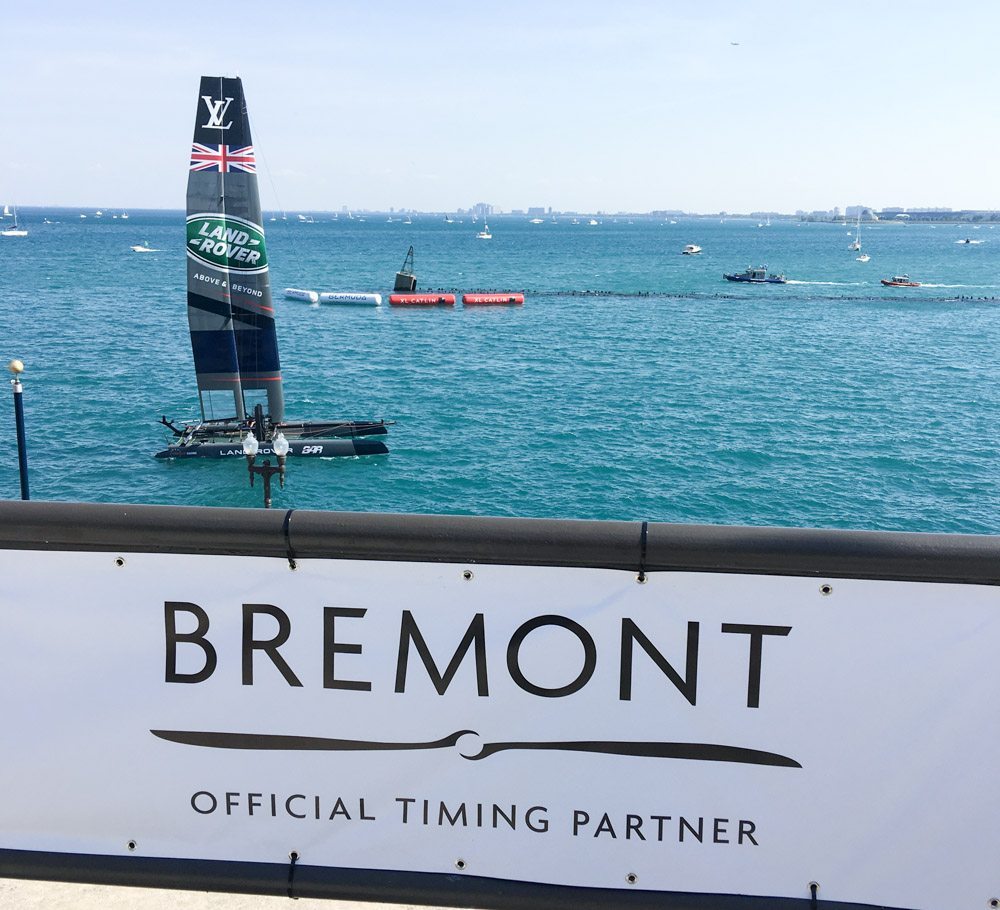In fact, the Bremont Regatta AC chronograph is perhaps the most attractive regatta timer timepiece I’ve encountered. These specially modified chronograph watches have an important function – and that is to countdown (with visual clarity) the five minutes before a regatta race begins. During these five minutes each of the competing boats must be at the starting line, traveling as fast as possible, without actually crossing the starting line (else they face a penalty). Strategy is part of the America’s Cup even before the starting gun begins, and thus being able to easily see that important five minute countdown (as a sailor or spectator) is quite important.
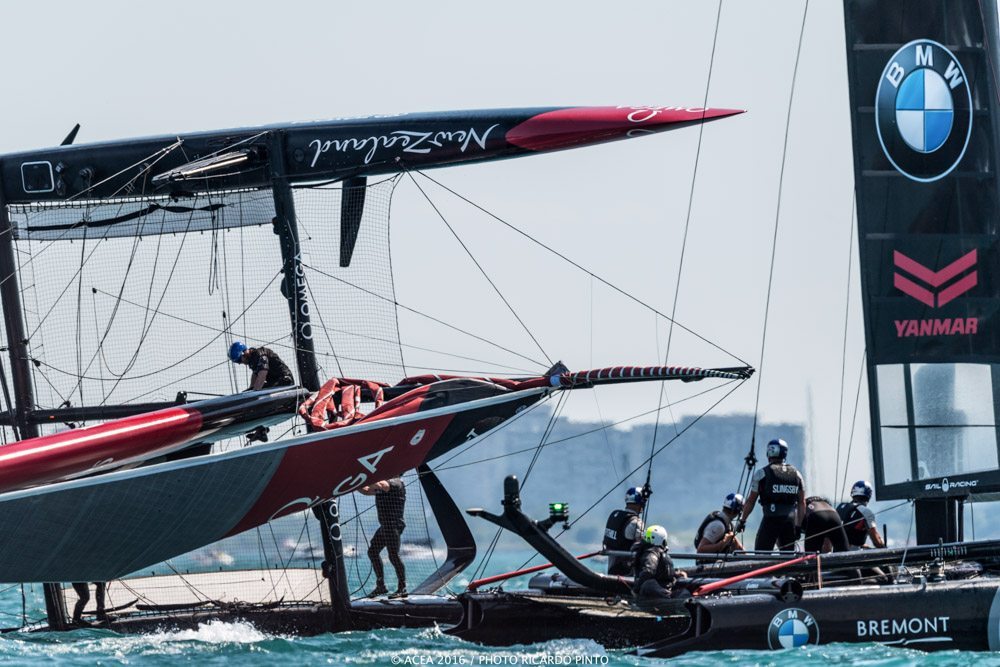
Bremont’s position in the America’s Cup is sort of unique because they work with the event as a whole, as well as one of the teams (Oracle). Thus, they produced a series of America’s Cup watches, as well as at least one model for Oracle Team USA (hands-on here). The Regatta AC is perhaps the most distinctive, but even though they are all more or less based on existing watches, the style and design they bring to the sport is fitting. I won’t try to suggest that everyone watching and competing in the America’s Cup is wearing a mechanical watch. The sailors themselves seem to choose either very sporty digital watches, or something super nice and mechanical. I’m willing to wager that if the sailors did not all value their mechanical watches, more of them would be worn during the “beat-em-up” hour they spend practicing out on the water.

Even though today’s AC45 boats are extremely light and ultra-efficient, they are also dangerous. Combine the ropes pulled in all directions with the moving sails, rods, and poles, and you have a situation that has claimed people’s lives. At the least, being on a racing sail boat is a “high-impact experience.” I did hear plenty of unsolicited compliments about how Bremont watches nicely put up with the abuse.
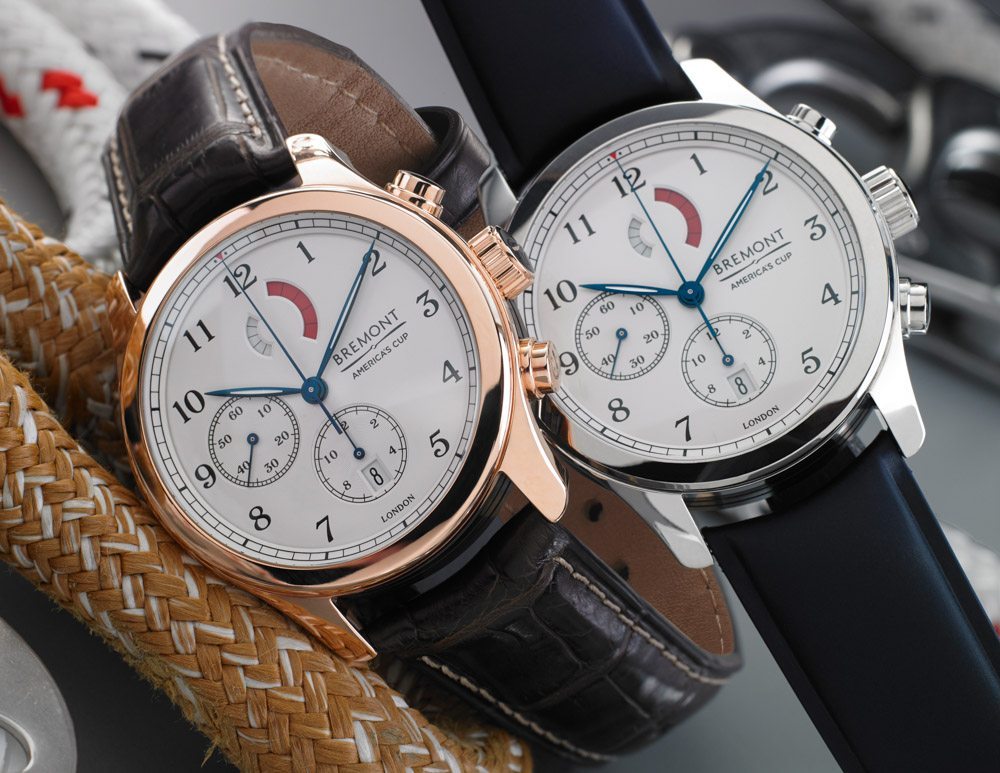
The most surprising part of being on the boat during a match with Oracle Team USA was the noise. Not the sound of the team members communicating with each other, but rather the noise of the wind, the water, and the boat itself. The forces on the AC45 from the wind are incredible, and despite the advanced materials, it creaks and bends like ships of old. Perhaps not as much, but the sound of the stress on the structure is impressively dramatic. You also have the various howls and squeals of the wind that can change from second to second as the team tacks all over the place in an attempt to find the best wind, and the fastest path to the next marker or finish line. Nevertheless, you need to do your best to ignore the constant splash of water all over your body. You will get wet.
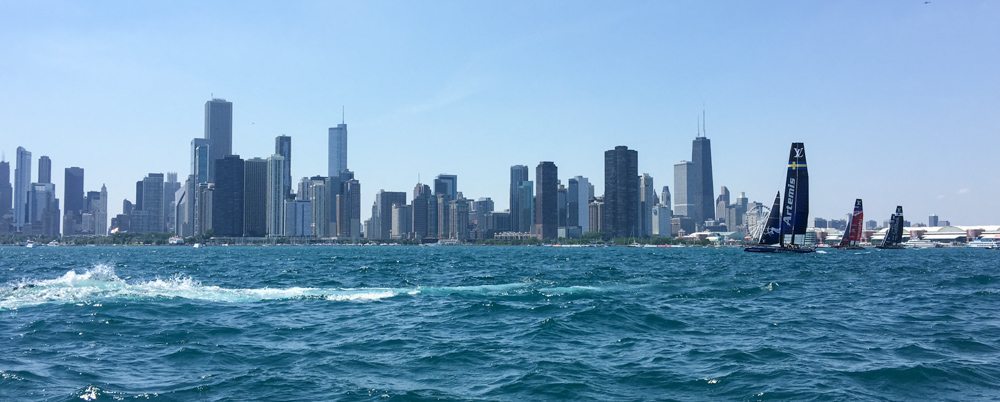
Modern sailing catamarans spend a lot of their time outside of the water. High-tech engineering has allowed the boats to fly like a wing, hovering above the water with only a few small parts submerged. This is why some people say the boats fly, because in a sense, they do. Don’t think that means they also don’t go pretty fast.
Finding the right course to beat the competition is not an easy task when sailing. What I learned during this experience is that the winds and currents not only vary from moment to moment, but even 10 feet from the boat’s current position the conditions can be different. The real trick, it seems, when sailboat racing, is to choose the correct course and to keep shifting directions in order to get the best wind. Thus, the measurement of not only how fast a boat is moving on average, but also the overall distance traveled to get to the finish line through the various markers is very important.
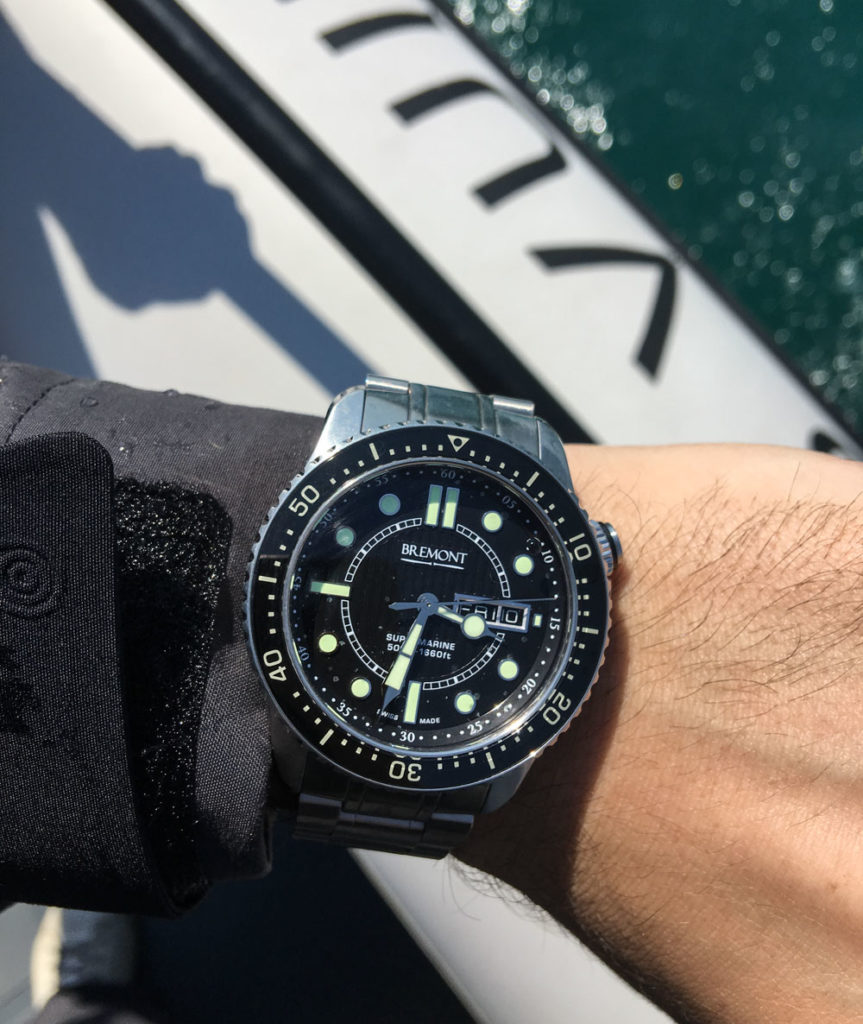
Once the crew gets the boat to a comfortably fast speed and headed in the right direction, the stresses of the immediate race seem to be blown away with the wind, resulting in a moment of scenic relaxation as the mind’s worries are distracted by the lapping of water, the heat of the sun, and the breeze in your face. I was lucky enough to experience this – at least for a moment – until the competitor’s boat capsized right in front of us.
“Walls of wind,” as they are something called, can easily cause an aggressively moving AC45 sailboat to tip over. Oracle Team USA’s ship was quite close to team New Zealand when their boat went over. It happens slowly until the mast plops into the water. The vessel, now on its side, had crew members holding on to the nets, while one of them was in the water. Thankfully, no one was hurt, and the support motorboat that came to the rescue was able to tow the boat upright again within minutes. Perhaps ironic is that less than 15 minutes after I exited Team USA’s boat, they themselves capsized. I did consider myself slightly fortunate to not have been on the boat when that happened…
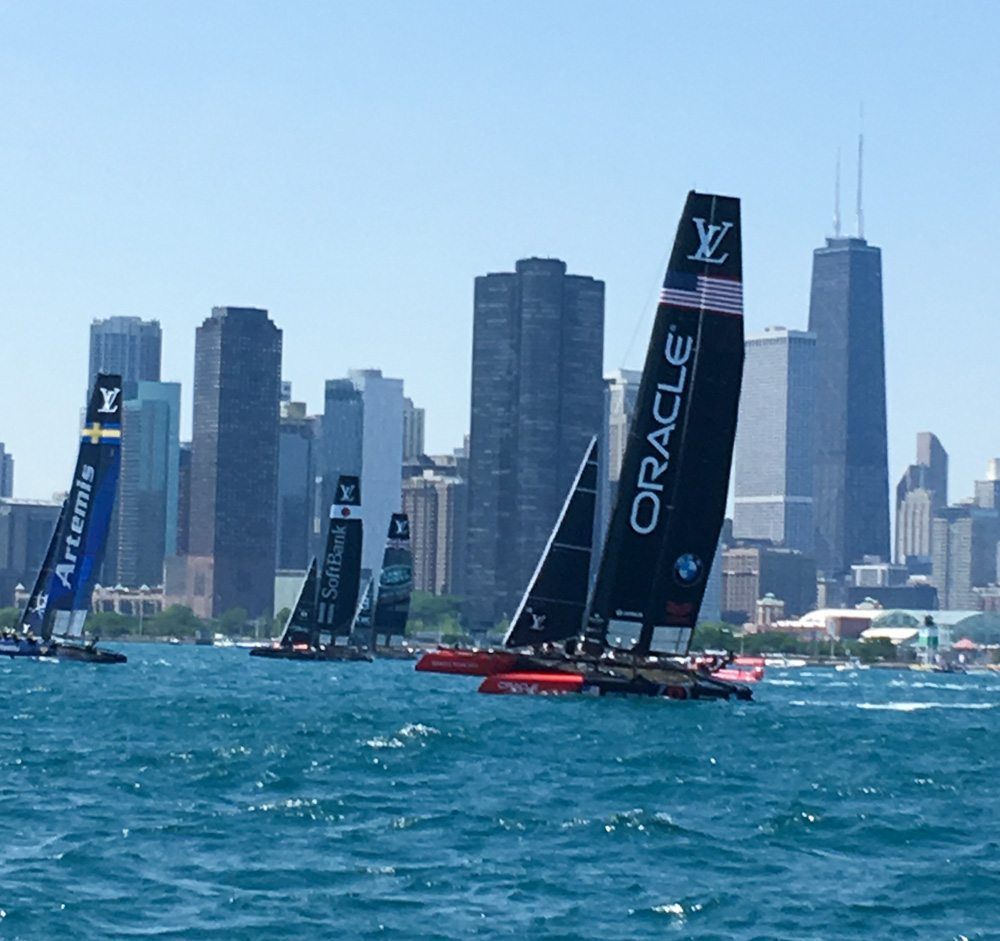
Regatta racing offers a unique combination of romance and adventure. I think it is this reason why the sport remains popular with the brands that support it. Physically challenging, and technically demanding, the sport today nevertheless requires huge investments from a range of brands. The last America’s Cup event used larger AC72 boats, which proved way too expensive to have more than three teams. The smaller AC45 boats for this round of America’s Cup races are slightly more accessible, and the total number of teams is now up to six with teams from USA, France, England, Japan, New Zealand, and Sweden.
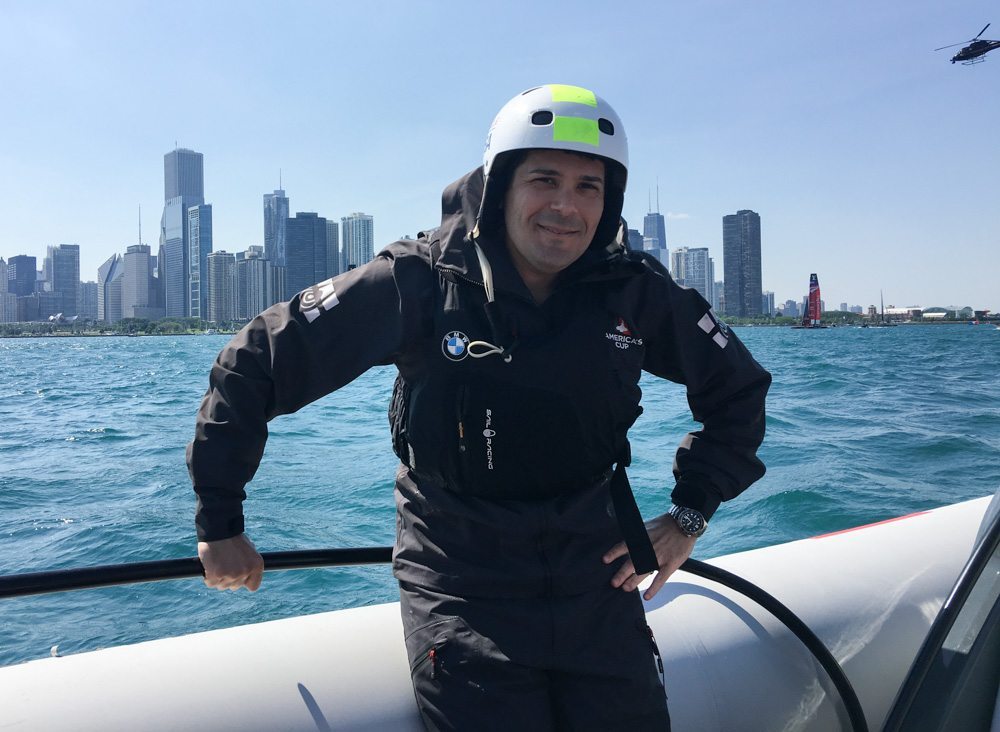
America’s Cup has a major challenge to overcome, and that is to increase audience numbers. You wouldn’t necessarily think so seeing the crowds the Chicago event commanded, but at the end of the day, most Americans still can’t relate to a boat racing event because most Americans spend very little time on a boat. Car racing is so much more a mainstay of the American culture because we are for the most part a culture very interested in cars and driving. Thus, we are both excited and familiar with what peak car performance might be like. With sailing or boating in general, you are talking about a relatively small demographic (though it exists, for sure) of both people who have boats, but who understand the challenges of sailboat racing. For that reason, the America’s Cup has an uphill battle finding common ground with many Americans who simply lack enough relevant experience to fully appreciate the sport and the event in general.
With that said, for those who are already familiar with regatta racing, the appeal of the event is easy to grasp – and pretty much anyone who becomes exposed to sailing will probably find the event interesting. I’m keen to learn more about sailing myself and would like to learn at least the basics of it. Depending on where you live, this is a simple or complicated task, but in the arena of things to learn such as diving, driving, and flying… sailing is easily something to add to the list. All part of the portfolio of skills that men (regardless of whether we need them or not) are often interested in acquiring.
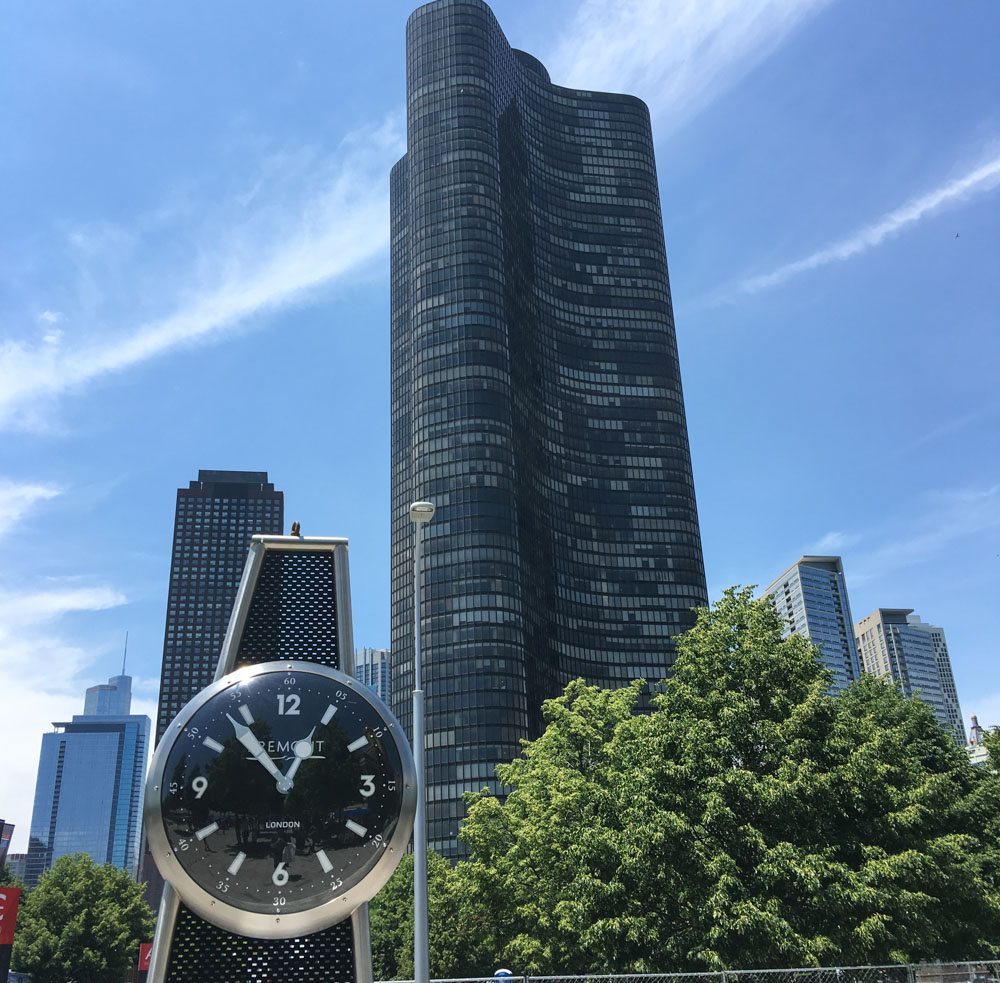
This America’s Cup experience was important for me to fully understand what, not only Bremont, but so many other brands find appealing about the world of sailing. What I think is the most special about this sport is its ability to combine lifestyle, aesthetics, leisure, and competition all into one pursuit. I do consider myself a new (albeit novice) fan of the America’s Cup, and it doesn’t hurt that Bremont’s watches meant for the event look pretty decent on the wrist to my tastes. bremont.com

